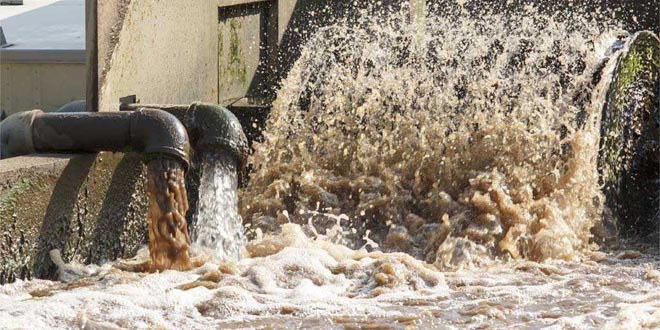Highlights
- 10 major sewage discharging cities to be focused on, says NMCG
- These cities together discharge for over 2,300 MLD of sewage in Ganga
- NMCG will also encourage localised treatment of sewage
New Delhi: Amidst growing concerns that the Centre’s much publicised Rs 20,000 crore programme Namami Gange is yet to match up to the Ganga cleaning objectives set during its inception in 2014, the National Mission for Clean Ganga (NMCG) has stated that the top 10 cities which discharge the most amount of sewage in the river will have their sewage treatment capacities increased. The Ministry of Water Resources is planning to double sewage treatment capacities in the cities of Kolkata, Kanpur, Patna, Varanasi, Allahabad, Howrah, Haridwar, Bhagalpur, Farrukhabad and Bally, and is hopeful that increasing the sewage treatment capacities in these cities will result in a much cleaner Ganga by the end of 2021.
A total of 2,953 million litres of sewage is discharged daily into the Ganga, of which 2,300 million litres comes from the above mentioned ten cities. Presently, only 1,500 litres are treated by these cities together daily, and approximately 1,800 litres flows into the river daily, without any treatment. Considering the enormous amount of untreated sewage that flows into the river daily from these cities, the Ministry has taken a fast track approach to build sewage treatment plants (STPs) in Farrukhabad and Bally which do not have STPs and increase the sewage treatment capacities in the other eight cities.
As over 80 per cent of sewage in Ganga comes from these ten cities and if we can completely stop untreated sewage from getting discharged into the river from these cities, most of the Ganga will be clean. We have already fast tracked the development of STP construction in the cities which do not have STP, while the existing STPs in these cities will be upgraded to treat more sewage daily, said Rajiv Ranjan Mishra, Director General, National Mission for Clean Ganga.
Apart from setting up of sewage treatment plants, the NMCG has also decided to encourage localised treatment of sewage. Since setting up of STPs is both time consuming and costly, the NMCG will hand over sewage treatment to local organisations who can treat sewage at source before it flows into the river, thus saving both time and cost for the project. The localised sewage treatment system will be in place in more than 80 towns through which the river flows.
“Many local organisations have shown interest in contributing towards Namami Gange. They can choose to treat sewage at source and accelerate the process of cleaning the Ganga,” said Mr Mishra.
The NMCG’s decision to focus on the top 10 sewage generating cities has however, raised a few eyebrows among activists who have been working on cleaning the river for years. Rakesh Jaiswal, Founder and Executive Secretary of Eco Friends, an NGO working towards a cleaner Ganga asked why the government did not focus on the top 10 cities for two years, as doing so would have yielded better results.
Had this been the initial plan instead of NMCG’s focus on setting up STPs, the mission would have given better results. It has been two years since the Namami Gange programme and despite such a huge budget, we do not have the desired results, said Mr Jaiswal.
The Namami Gange project was started with much fanfare and even Prime Minister Narendra Modi has reviewed the programme from time to time, directing officials to ensure progress. Over 2,000 crore worth of funds under the programme remain unutilised, as per a December 2017 report by the Comptroller and Auditor General (CAG). As deadlines of a cleaner Ganga by June 2017 and October 2017 have been missed, it remains to be seen whether the NMCG’s new focus brings in new results in favour of the programme.






















